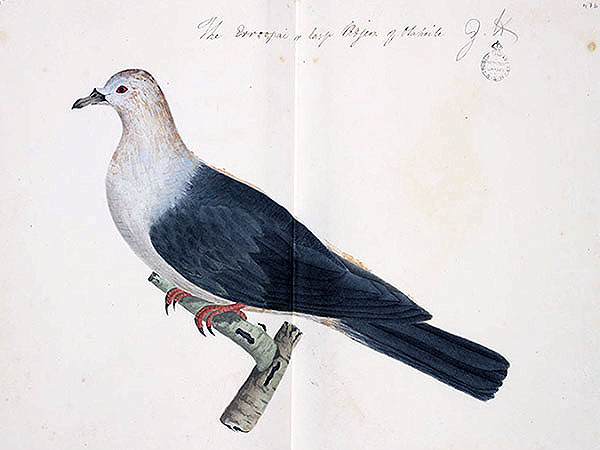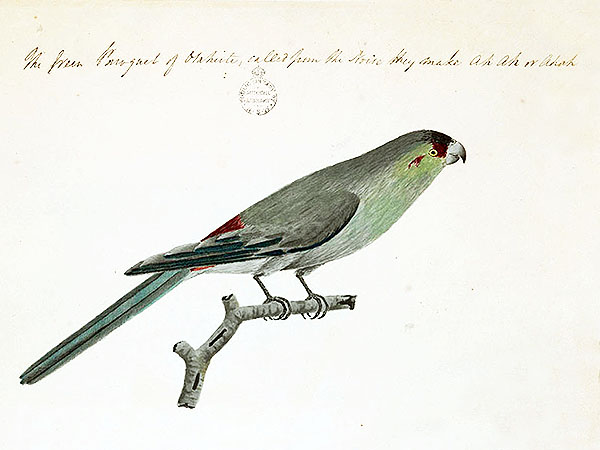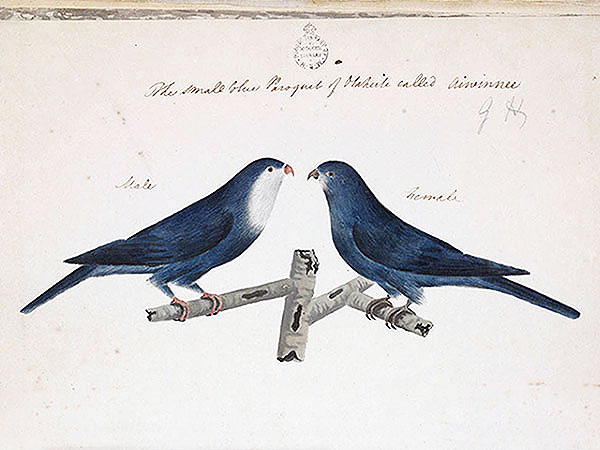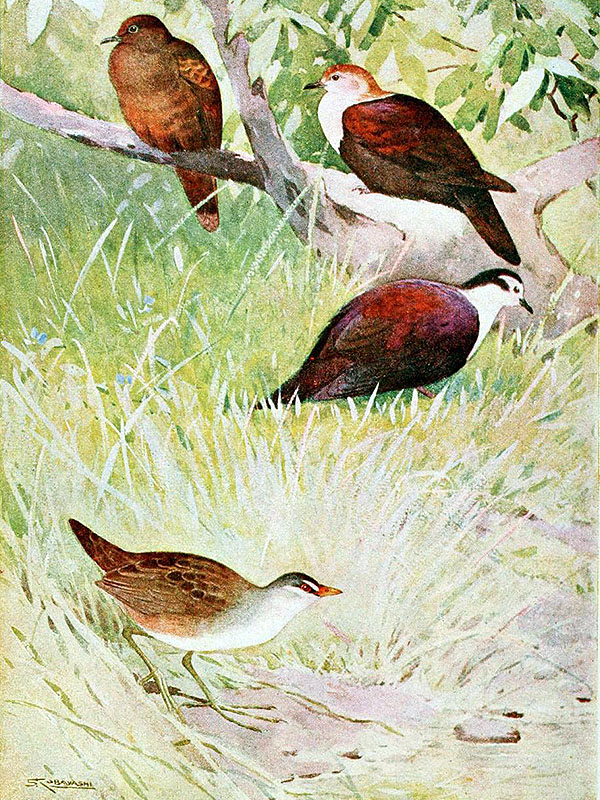A new paper, that was just published [1], deals with the subfossil remains that had been excavated on the Gambier Islands, far, far in the almost easternmost corner of Polynesia, more easterly are only the Pitcairn Islands and the well known island of Rapa Nui.
The Gambier Islands, for those who don’t know them, are basically a more or less sunken atoll, a so called ‚almost atoll‘ like the better known Aitutaki atoll in the Cook Islands. This ‚almost atoll‘ consists of a larger but still relatively small main island, Mangareva, and several other smaller islets surounding it, all of them of volcanic origin and merely the meager remains of a former large volcano. The whole group of islands is encircled by a fringe of coral islands, which again are formed by lifted coral reefs. There are some other real atolls (only coral islands without remains of former volcanoes) that belong to the Gambier group, these are Maria (East), Marutea (South), Matureivavao, Morane, Temoe, Tenararo, Tenarunga, and Vahanga.
***
The authors describe one new species, a pigeon, and mention several others, mostly pigeons and of course seabirds, we are on a island group here after all. 😛
***
The first surprise is Bountyphaps, very likely the same Bountyphaps obsoleta Worthy & Wragg that was originally described from Henderson Island, Pitcairn Islands. Its remains were found on Kamaka Island, one of the numerous small or very small islands within the group. The remains are interpreted as probably having been transported from the Pitcairn Islands to the Gambiers by Polynesian settlers, which indeed are known to have captured and tamed parrots and pigeons, at least in olden times when there still were parrots and pigeons.
The next bird is a newly described pigeon species, Ducula tihonireasini Rigal, Kirch & Worthy, its remains were found on Taravai Island, the second largest of the islands in the group, and it probably was endemic to the Gambier Islands.
Then there are a Ptilinopus sp. which may be identical to the Atoll Fruit-Dove (Ptilinopus coralensis Peale), and a Columbidae gen. & sp., probably Macropygia sp., which would extend the distributional area of that genus far to the east and to the south.
There are of course remains of the Pacific Reef Egret (Egretta sacra ssp. sacra (Gmelin)), the most common land bird in whole Polynesia today.
And off we go to the seabirds, here we have the remains of Red- and White-tailed Tropicbirds, a rather small Pseudobulweria sp., apparently also a new species, three unspecified Pterodroma spp., three Puffinus spp., the Wedge-tailed Shearwater, the Polynesian Storm-Petrel, the Great- and the Lesser Frigatebird, the White Tern, and finally another tern, probably the Blue Noddy.
***
Most of these birds are known to have occurred on the Gambier Islands at least since 2005 when their first remains were found (except for Bountyphaps obsoleta, whose remains were wrongly assigned to another pigeon species, Alopecoenas nui (Steadman)). But only now their subfossil bones were scientifically investigated.
*********************
References:
[1] Stanislas Rigal; Patrick V. Kirch; Trevor H. Worthy: New prehistoric avifaunas from the Gambier Group, French Polynesia. Palaeontologia Electronica 21.3.4A 1-35. 2018
*********************
edited: 07.12.2018








